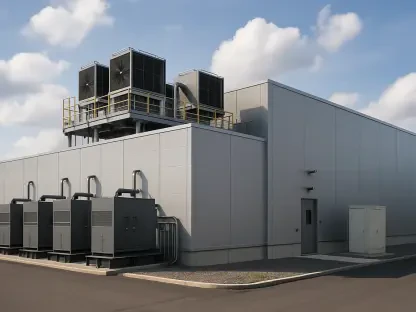Azure Functions, Microsoft’s serverless compute service, have seen significant advancements in response to evolving development practices and technologies. As enterprises increasingly adopt Kubernetes and AI for their architectural needs, Azure Functions have integrated these trends to offer more efficient, scalable, and intelligent computing options. This article explores how Azure Functions are evolving with Kubernetes and AI integrations, emphasizing new features, application models, and billing options.Azure Functions have undergone substantial transformation since their inception. This evolution is driven by the need to adhere to contemporary development practices and leverage cutting-edge technologies like Kubernetes and AI. Despite the rise of these new paradigms, serverless computing continues to offer essential, on-demand compute capabilities that are central to cloud-native applications.
The Significance of Serverless Computing
Evolution and Resilience of Serverless Computing
Azure Functions’ journey emphasizes the enduring importance of serverless computing in modern software development. Despite the buzz around Kubernetes and AI, serverless computing remains crucial for building scalable and efficient cloud-native applications. With increased demand for flexible, event-driven architectures, serverless platforms like Azure Functions are indispensable. Serverless computing’s relevance lies in its ability to provide flexible and efficient compute on demand. This capability is pivotal for modern applications that must process large volumes of events and data quickly. The event-driven model of Azure Functions enables rapid response to data changes, making it a vital component in today’s fast-paced development environment.Serverless computing continues to hold significant appeal for developers due to its inherent efficiency and scalability. In an environment where applications need to react promptly to a myriad of events, serverless platforms allow for the quick execution of functions without the overhead associated with traditional server management. This not only streamlines the process of deploying applications but also reduces the cost and complexity, making it an attractive option for enterprises looking to optimize their cloud-native strategies.
The Role of Event-Driven Architecture
Azure Functions excel in environments where an event-driven model is essential. This approach allows applications to react to data changes and events, facilitating efficient resource use and minimizing overhead. Events from various sources, such as Azure Event Grid and CloudEvents, can trigger Azure Functions, streamlining data processing workflows. The event-driven architecture underpins many modern applications, enabling them to process events as they occur rather than relying on scheduled tasks. This model is particularly effective for message-based applications, where timely processing of data is critical. By leveraging Azure Event Grid and adopting standard messaging formats like CloudEvents, Azure Functions simplify the integration of diverse data sources and event triggers.Such an architecture fosters a more dynamic and responsive application environment. For example, an e-commerce website using Azure Functions in an event-driven model can immediately process and react to user actions, like purchases or reviews. This leads to a more interactive and real-time user experience. Moreover, the ability to integrate seamlessly with various data sources ensures that applications remain robust and adaptable, capable of handling complex workflows without extensive reconfiguration or manual intervention.
Integration with Kubernetes
Azure Functions in Managed Kubernetes Environments
With the advent of managed Kubernetes services like Azure Container Apps (ACA), Azure Functions have expanded their deployment capabilities. Developers can now deploy and scale Functions within ACA, benefiting from Kubernetes’ powerful orchestration features without dealing with complex infrastructure. Managed Kubernetes environments offer a platformless experience, allowing developers to focus on application logic rather than underlying infrastructure. Azure Functions within ACA exemplify this trend, where developers can leverage Kubernetes’ scalability and resilience without needing deep expertise in Kubernetes management. This integration streamlines the development and deployment process, enabling faster time-to-market.By allowing developers to utilize Kubernetes for orchestration while abstracting the infrastructure complexities, the platformless model represents a significant advancement in application deployment strategies. This approach not only enhances scalability but also improves the operational efficiency of development teams. For instance, a development team focused on building scalable web applications can leverage ACA to automatically manage resources, scale functions as needed, and ensure high availability without the overhead of managing the Kubernetes cluster. This ultimately translates into reduced time and cost, fostering a more agile development environment.
Benefits of Platformless Approach
The platformless approach facilitated by ACA enhances the developer experience by abstracting away the complexities of Kubernetes. This allows developers to concentrate on writing and deploying functions without worrying about scaling, networking, or maintenance of the Kubernetes cluster. By minimizing infrastructure management, the platformless approach reduces operational overhead and accelerates development cycles. Developers can deploy functions quickly, scale them automatically in response to demand, and benefit from Kubernetes’ robust features without the typical administrative burden. This model aligns with the broader trend of simplifying cloud-native development and improving operational efficiency.For example, consider a business aiming to deploy a highly scalable microservices architecture. The platformless approach allows their developers to focus on the service design and function logic, while ACA handles the scaling and orchestration seamlessly. This results in a more streamlined deployment process and better resource utilization, as the developers are relieved from the intricate details of Kubernetes management. Such capabilities are particularly advantageous in fast-paced environments where agility, quick scalability, and high availability are paramount.
Enabling Generative AI Applications
Integration with Azure OpenAI
Azure Functions have integrated with Azure OpenAI, enabling developers to build and deploy generative AI applications seamlessly. This integration allows functions to utilize AI models for various tasks, such as natural language processing, image recognition, and other intelligent operations. The integration with Azure OpenAI marks a significant advancement for developers aiming to incorporate AI capabilities into their applications. By enabling functions to call AI models on demand, developers can create intelligent applications that respond dynamically to events and user inputs. This capability opens new possibilities for innovative applications across industries.By leveraging Azure OpenAI within Azure Functions, developers can enhance the functionality and responsiveness of their applications significantly. For instance, a customer service application could use Azure Functions to trigger natural language understanding and AI-driven responses, thereby enhancing user interaction without the need for extensive backend resources. This not only improves the user experience but also reduces operational costs and complexity, as the AI functions are managed and scaled within the serverless environment seamlessly.
Applications and Use Cases
Generative AI, powered by Azure Functions, has numerous applications. From automating content generation to enhancing customer interactions with AI-driven chatbots, the potential use cases are expansive. Azure Functions’ seamless interaction with AI models ensures scalable and efficient deployment of AI-powered features. For instance, e-commerce platforms can use generative AI to personalize customer experiences, while content management systems can automate the creation of engaging marketing materials. Leveraging Azure Functions for these tasks ensures that AI-driven features are scalable, responsive, and easy to manage, providing significant value to a wide range of applications.Additionally, applications in healthcare, finance, and education can benefit from the integration of AI with serverless functions. For example, in healthcare, Azure Functions can trigger AI models to analyze medical images swiftly, providing physicians with timely and accurate diagnostic support. In finance, AI functions can be used to detect fraudulent transactions in real-time, ensuring better security and compliance. The ability to deploy intelligent and responsive features without worrying about scaling and infrastructure management makes Azure Functions a versatile tool in modern application development across various sectors.
Flexible Billing Options
Introduction of the Flex Consumption Plan
To meet the diverse needs of enterprise customers, Microsoft introduced the Flex Consumption plan for Azure Functions. This new billing option offers greater flexibility compared to the traditional Consumption plan, allowing for more customizable infrastructure deployment and cost management. The Flex Consumption plan is designed to address the specific requirements of enterprises that need scalable and adaptable serverless solutions. By offering more granular control over resource allocation and usage, this plan helps organizations optimize their serverless operations, ensuring cost-effectiveness and efficiency.The Flex Consumption plan’s introduction marks Microsoft’s commitment to addressing the financial and operational needs of modern enterprises. Traditional serverless billing models often lack the flexibility required by larger, more complex deployments. With this new plan, businesses can fine-tune their resource usage and expenditures to align more closely with their operational goals. This allows for more strategic cost management, as organizations can scale their serverless function usage dynamically without incurring unnecessary expenses, providing a more sustainable approach to serverless adoption.
Enterprise Needs and Cost Management
The Flex Consumption plan addresses enterprise needs for greater flexibility and controlled cost management in serverless settings. As enterprises grow their applications, a billing model that adapts to variable demands and complex tasks becomes essential. This plan offers the necessary elasticity and control, allowing enterprises to manage their serverless expenses more efficiently, matching costs with actual usage patterns.This billing flexibility is particularly advantageous for enterprises with fluctuating workloads, such as retail businesses facing seasonal peaks or startups experiencing unpredictable growth. By enabling dynamic adjustments to resource allocation and billing, the Flex Consumption plan helps organizations avoid both over-provisioning and under-utilization. This not only optimizes costs but also ensures that serverless applications remain performant and resilient, enhancing business agility and competitive edge.In addition, Azure Functions continue to advance, offering robust, scalable, and adaptable serverless compute services that keep pace with current development trends. Features like integration with Kubernetes via Azure Container Apps (ACA), support for generative AI applications, and a flexible billing model showcase Microsoft’s commitment to making Azure Functions versatile, efficient, and enterprise-ready. These developments guarantee that Azure Functions stay vital for developers constructing cloud-native applications, providing the infrastructure needed to quickly and effectively address the dynamic demands of modern software development.









